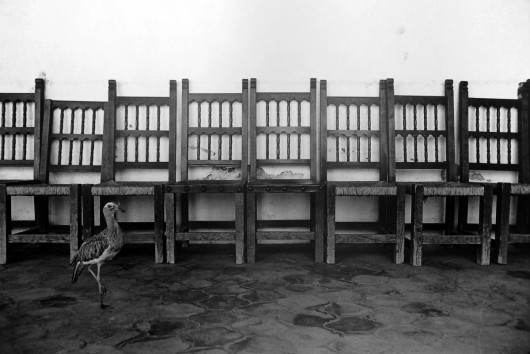ARTISTS
Graciela ITURBIDE

Graciela Iturbide was born in Mexico City in 1942, lives and works in Mexico City. She enrolled at the film school Centro de Estudios Cinematográficos at the Universidad Nacional Autónoma de México in 1969 to become a film director. However, she was soon drawn to the art of still photography as practiced by the Mexican modernist master Manuel Álvarez Bravo, who was teaching at the university. From 1970-71, she worked as Álvarez Bravo’s assistant, accompanying him on his various photographic journeys throughout Mexico. In the early half of the 1970s, Iturbide traveled widely across Latin America, in particular to Cuba, and several trips to Panama. In the mid-70s, Iturbide began to reveal a clear preference for the theatrical atmosphere of popular Mexican Festivals, where Catholic rites blend with indigenous tradition in a great carnivalesque celebration. Through these works, Iturbide emphasizes the irony of Mexican imagery which represents death and accentuates the surrealistic character of these social rites. Iturbide’s major solo exhibitions include “Heliotropo 37” Fondation Cartier pour l’art contemporain (2022); Museum of Fine Arts, Boston (2019); Tate Modern (2013); Museo Frida Kahlo, Mexico City (2012); Barbican Art Gallery, London (2012); Museo de Arte Moderno, Mexico City (2011); MAPFRE Foundation, Madrid (2009); Fotomuseum Winterthur (2009); Americas Society, New York (2008); J. Paul Getty Museum, Los Angeles (2007); Museum of Modern Art, Rio de Janeiro (1993); San Francisco Museum of Modern Art (1990); Centre Pompidou, Paris (1982). Major awards include the Cornell Capa Lifetime Achievement Award (2015); the Lucie Award (2010); National Prize of Sciences and Arts, Mexico City (2009); Hasselblad Foundation Photography Award (2008); Legacy Award (2007); Hugo Erfurth Award (1989); a Guggenheim Fellowship (1988); the Eugene Smith Memorial Foundation Award (1987).



